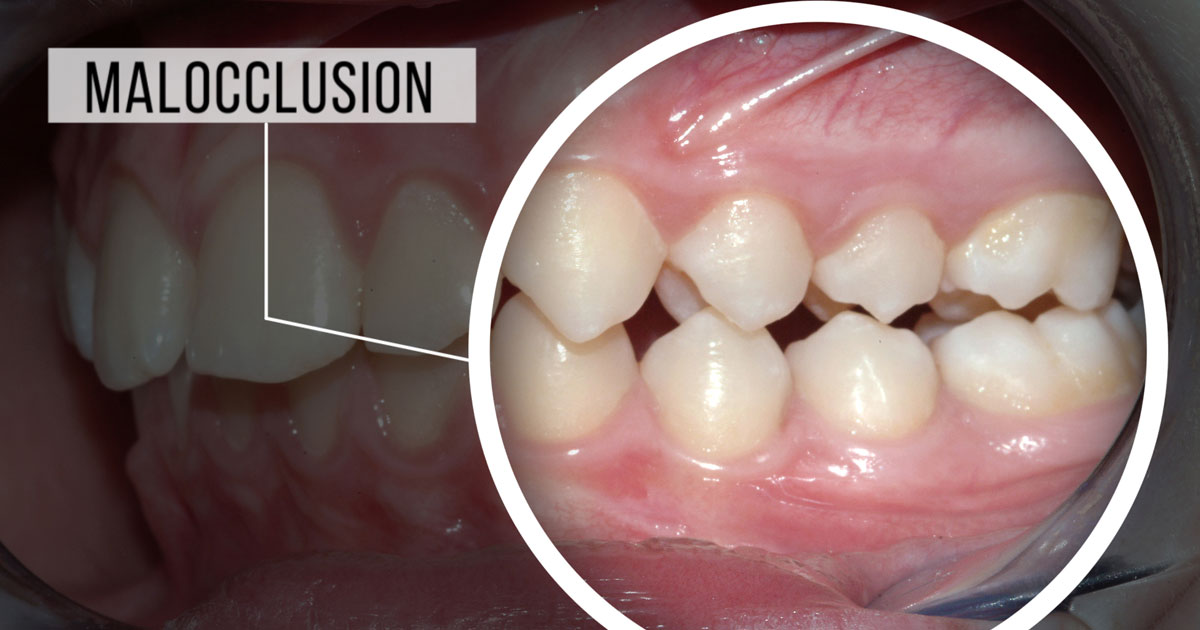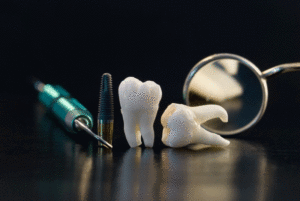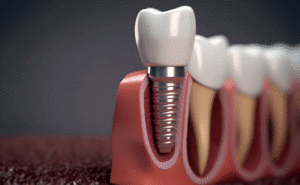In an ideal mouth, there should be a slight overlap concerning how the upper jaw rests on the lower jaw. However, when there’s either a greater than normal underbite or overbite, the condition is referred to as malocclusion or a situation where the teeth are not aligned properly. A malocclusion is often hereditary in nature, and aside from an abnormal bite, it can also lead to an overcrowded mouth.
While some malocclusions require treatment to correct, others are so minor in nature that they don’t require any sort of corrective treatment. Aside from lineage, some other factors that lead to malocclusion include facial injury, prolonged childhood pacifier use, childhood thumb sucking, and tumors in the mouth, however often times malocclusions aren’t preventable.
Now that you know a little bit about malocclusions, we thought it would be fitting to take a look at the most common types that dentists see. Here’s a closer look:
The Most Common Malocclusions
There are three main classes of malocclusions:
- Class 1: These are the most common types of malocclusions, characterized as a situation where the upper teeth slightly overlap the lower ones on an otherwise normal bite.
- Class 2: This type of malocclusion consists of an overbite. An overbite is when the upper jaw and the upper teeth abnormally overlap the lower jaw and teeth.
- Class 3: This class of malocclusion consists of an underbite. An underbite occurs when the lower jaw and lower teeth overlap the upper jaw and the upper teeth.
Treating Malocclusion
As we noted in the opening, some cases of malocclusion are so minor that individuals will never elect to seek any corrective treatment. However, in the case of moderate to severe Class 1, 2, and 3 malocclusions, corrective treatment is often the best course of action. Malocclusions are commonly treated with orthodontics but there are other treatments.
Orthodontics breaks down into two separate treatments, braces and Invisalign®. Braces many of us know well nowadays. Braces are bracket-and-wire devices placed atop your teeth to help mold them back into place. Braces have long been used to help with malalignment but they do come with a few downsides. The process of cleaning teeth that have braces on them is a difficult task as one must avoid the wires. Braces also limit your diet as sticky and hard foods could cause the braces to break.
These issues are solved under a different orthodontic device known as Invisalign. Invisalign is a layer of clear material worn like a retainer that helps straighten your teeth over time. Because they are removable, one can take them out to clean the teeth and eat or drink as well. Invisalign is the future of orthodontics with a price comparable to that of traditional braces, making them a great choice for those looking to fix malaligned teeth.
There are a few other ways to have your malocclusions treated. Tooth extraction is an option. Whilst this is usually reserved for teeth that are no longer viable, there are also plenty of cases where a tooth is removed because of the harm it is or could cause to surrounding teeth. Retainers and oral splits can also help those struggling with malocclusions. Depending on the severity of the issue, these may be a better option than that orthodontics. Having a consultation with a doctor is necessary in order to understand this though.
While surgery is usually a last resort option when it comes to treatment, it’s worth noting that the other three treatments – braces, tooth extraction, and retainers/oral splints – may also be administered simultaneously to complement one another.
The benefits of having a malocclusion treated extend beyond just attaining a proper bite. Treatment can also make the teeth easier to clean with a toothbrush, which can lead to better overall oral care and also minimize the likelihood of cavities and tooth decay. Having malocclusions treated can also limit strain that is placed on the jaw and teeth, thereby reducing the likelihood of broken or chipped teeth as well as issues with the TMJ.
Treat Your Malocclusions Today!
If you have been searching for a place to treat your malocclusions in Jacksonville, Florida, or the nearby area, Caven Dental Group is the place for you! Having expertly managed cases of malocclusion as well as many other conditions, our doctors are always ready to take on new patients and give them the smile they have been waiting for!
If you would like to learn more about any of our doctors – Richard Caven, Shelby Denman, or Stephen Carpenter – consider reaching out to us by calling 904-822-1919. Our kind staff is always ready to assist you with questions you may have and in scheduling an appointment. We look forward to working with you in fixing your malocclusions and giving you the smile you are looking for!



